WHAT ARE CRPS AND RSD?
Complex Regional Pain Syndrome (CRPS) is also known as Reflex Sympathetic Dystrophy (RSD). Complex Regional Pain Syndrome represents a chronic neurologic syndrome that is complicated, painful, and frustrating to both patients and doctors alike.
The disease represents an overactivity of the sympathetic nervous system as a result of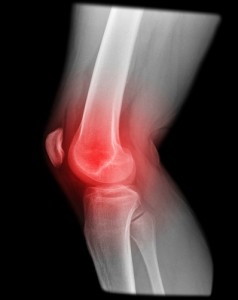 either a trauma or an unknown cause. There is one theory that involves an overactivity of the immune system leading to inflammation. It usually affects an arm or leg.
either a trauma or an unknown cause. There is one theory that involves an overactivity of the immune system leading to inflammation. It usually affects an arm or leg.
WHY DOES THE SAME DISORDER HAVE TWO NAMES?
It has been called numerous things over the years, because doctors keep trying to classify it differently. The term RSD was initially most common, but has been replaced by CRPS since it did not fully characterize the illness properly. The term Reflex Sympathetic Dystrophy (RSD) was changed to Complex Regional Pain Syndrome (CRPS) in 1993 by the International Association for the Study of Pain to formulate a better classification system which is described below.
HOW MANY PEOPLE IN AMERICA SUFFER FROM CRPS?
It is estimated that 3 million people in the US suffer from CRPS. 75% of those affected are women, with the majority being in their 30’s to 60’s.
Call (602) 507 – 6550 to schedule your Appointment TODAY!

WHAT ARE THE SYMPTOMS OF CRPS?
Patients may experience the following (any or all):
- Severe burning pain that is intense and much stronger than would be expected for
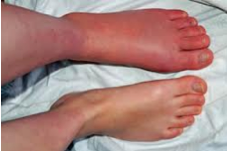 the injury sustained.
the injury sustained. - The pain gets worse over time rather than better.
- Starts at the point of injury, but spreads to the whole leg or arm. It may even spread to the other side.
- Significant sweating
- Swelling in the tissues
- Extreme sensitivity to the affected area
- Bone and skin changes
- Insomnia and emotional problems
WHAT ARE THE DIFFERENT TYPES OF CRPS?
- CRPS Type 1, Also known as RSD = where the nerve injury cannot be identified. It may follow a minor injury such as a fall or ankle sprain. It may be a fracture, a burn, tendonitis, many different injuries may cause it. It usually affects one are or one leg.
- CRPS Type 2 = Also known as Causalgia. In this type, a definitive major nerve injury is identified.
Regardless of the type, the pain syndrome is best described as an injury that has not followed a normal healing pathway and ended in a cycle of pain due to sympathetic nerve overactivity.
The severity of the preceding injury (if one can be identified) does not correlate with how bad CRPS is for the patient.
WHAT ARE THE CRITERIA TO MAKE THE DIAGNOSIS?
Patients with CRPS have pain, allodynia, or hyperalgesia. This means a person often has extreme sensitivity to touch over the affected extremity. This may mean just lightly touching the affected area, or it may mean extreme pain without even touching it.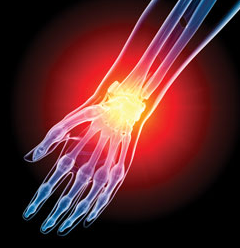
The affected extremity often has significant swelling, and there will often be temperature changes on the skin that are over 1 degree Celsius different from the other side.
One over-riding feature is that the pain being experienced is out of proportion to what should be seen with the patient’s condition.
Tests that may help with diagnosis may include x-rays, nerve conduction studies, bone scans, and a temperature test called thermography.
Call (602) 507 – 6550 to schedule your Appointment TODAY!

WHAT ARE THE 3 STAGES OF CRPS?
- Lasts for 1 to 3 months and includes:
- Skin temperature changes
- Spasms of muscles
- Severe burning pain that worsens with even a slight touch to the area
- Hair and nail growth faster than normal
- Beginning of skin changes – blotchy pale, shiny, sweaty
- Lasts for 3 to 6 months
- More skin changes
- Cracked nails
- Pain continues to worsen
- Hair growth that slows down
- Weakening muscles and stiffening joints
- Changes becoming irreversible
- Muscle wasting
- Pain that envelops the entire arm or leg
- Contracted limb from tight muscles/tendons
These symptoms may obviously lead to depression and/or anxiety.
What Treatment Exists for CRPS?
CRPS does not have a cure, but it can be slowed and reversed somewhat. Outcomes are better when treatment is started sooner.
- Physical Therapy with joint activity and range of motion exercises may stop the disease from worsening and help patients become more active.
- Various medications may be tried including: narcotic pain medications, anti-inflammatories, steroids, blood pressure medications, antidepressants.
- Cognitive behavioral therapy can assist in living with chronic pain.
- Lumbar Sympathetic Nerve Blocks or Stellate Ganglion Nerve Blocks may “break the
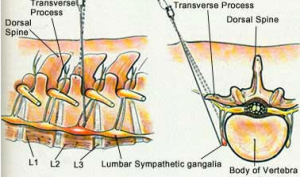
- cycle” of CRPS and help patients get back to more function while reducing pain.
- A surgical sympathectomy may or may not help patients. It can sometimes make things worse though.
- Spinal cord stimulator – electrodes are placed around the spinal cord, either in the lumbar spine or the neck (depending on involvement). This sends an electrical impulse around the spinal cord and can replace the pain with a tingling sensation. This may distract from the pain. It doesn’t heal it, but it can mask it.
- Intrathecal drug pump – infuses medications directly around the spinal cord for pain relief.
WHAT ARE THE TREATMENT OUTCOMES?
If the problem is diagnosed early, the outcomes are better. With quick treatment, it can be put into remission. Some people see symptoms go away by themselves, and others get worse even with active treatment.
The largest study to date looking at RSD/CRPS outcomes showed that if treatment was begun in the first two years of onset the successful results were 80%. As the time span lengthened after two years the results dropped significantly (Poplawski et al, JBJS, 1983). Between two and five years the success drops to about 70%, and after five years it plummets to approximately 10-20% success.
Arizona Pain Specialists offers comprehensive pain management at its multiple Arizona 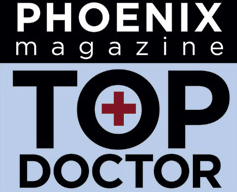 pain clinic locations serving Phoenix, Scottsdale, Mesa, Chandler, Glendale, Sun Lakes, Avondale, Gilbert, Apache Junction, Tempe, Queen Creek, Casa Grande, Buckeye, San Tan, Maricopa, Goodyear, Laveen, Litchfield, Ahwatukee, Tolleson, Fountain Hills, El Mirage, Surprise, Sun City, Wickenburg,Litchfield, Peoria, Prescott, Anthem, Carefree, Tonopah, Cave Creek, Florence, and Coolidge.
pain clinic locations serving Phoenix, Scottsdale, Mesa, Chandler, Glendale, Sun Lakes, Avondale, Gilbert, Apache Junction, Tempe, Queen Creek, Casa Grande, Buckeye, San Tan, Maricopa, Goodyear, Laveen, Litchfield, Ahwatukee, Tolleson, Fountain Hills, El Mirage, Surprise, Sun City, Wickenburg,Litchfield, Peoria, Prescott, Anthem, Carefree, Tonopah, Cave Creek, Florence, and Coolidge.
Call (602) 507 – 6550 to schedule your Appointment TODAY!
